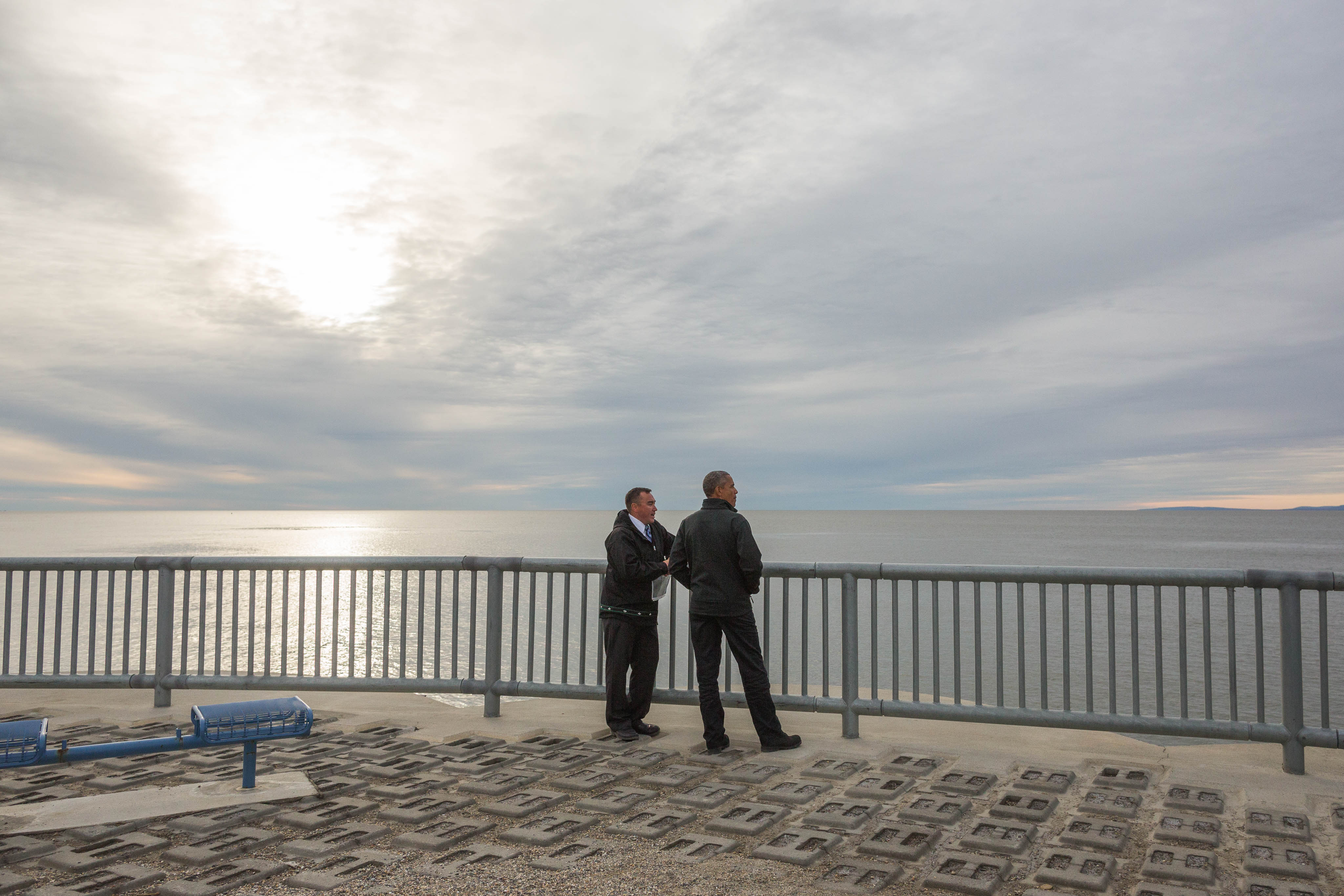Alaska Natives, international officials gather for White House meeting on Arctic research
WASHINGTON — Science ministers from 25 nations joined Alaska Natives from the the state’s Arctic for a first-of-its-kind White House meeting Wednesday to work on international cooperation for Arctic research.
The meeting comes just more than a year after President Barack Obama became the first sitting president to visit the Arctic in an effort to draw attention to Alaska’s advanced state of climate change, compared to the Lower 48. It is just a month after a cruise ship traveled through the Northwest Passage — a first-time feat managed because of thawing sea ice.

“The Arctic is experiencing environmental and climate change faster than any other part of the planet, creating significant challenges for the people who call the Arctic home, and multiplying impacts around the globe,” the ministers said in a joint statement Wednesday. The countries have joined together to capitalize on a growing public interest in the region and to combine their scientific efforts. The group statement noted the “importance of traditional and local knowledge and the sharing of scientific and technological information to advance well-informed, timely, and constructive decision-making.”
The group has agreed to examine their plans within a few key areas: Understanding what causes rapid Arctic climate change, and what the consequences are for the rest of the planet; bolstering needed Arctic data and advancing science, technology, engineering and mathematics education for Arctic residents.
The Arctic Council has been around for 20 years, but the high-profile White House attention is somewhat new. But the science ministerial is a first-time effort, aimed at providing a nonpolitical point of contact and collaboration for Arctic nations and interested countries.
Wednesday’s ministerial — the “main event” — is bookended by a week’s worth of more meetings, fancy receptions, and wonkish panels. There was a kick-off event at the Smithsonian National Museum of Natural History. The Norwegian Embassy will host a reception Thursday evening.
And in the middle of it all, Arctic countries are announcing new scientific plans and platforms they’ll share between nations.
That includes a five-year project by the U.S. Office of Naval Research to develop sensors and platforms that work in the ocean and below sea ice. The National Science Foundation backs a program called “EyesNorth” that uses local observations to track environmental changes. The Department of Energy plans to design support tools to create “microgrids” — ways to create power off the grid — in the Arctic.
Norway, meanwhile, is coordinating European Union scientists to create an Integrated Arctic Observing System.
Non-Arctic countries offered to share scientific endeavors too. That includes Japan, which plans to work with shipping companies to look at the predictability of Arctic weather and sea ice. Singapore, a key shipping nation, plans to examine potential shipping routes crossing the Arctic.
And some work has already been done. On Wednesday, the U.S. released a new “Arctic-wide digital elevation model” — a high-resolution mapping tool that “will be an important baseline for assessing future land surface changes,” and which the government plans to improve upon over the next year.
Arctic countries participating in the ministerial include the U.S., Canada, Denmark, Finland, Iceland, Norway, Russia and Sweden. Non-Arctic countries include China, France, Germany, India, Italy, Japan, Korea, Netherlands, New Zealand, Poland, Singapore, Spain, Switzerland and the United Kingdom.